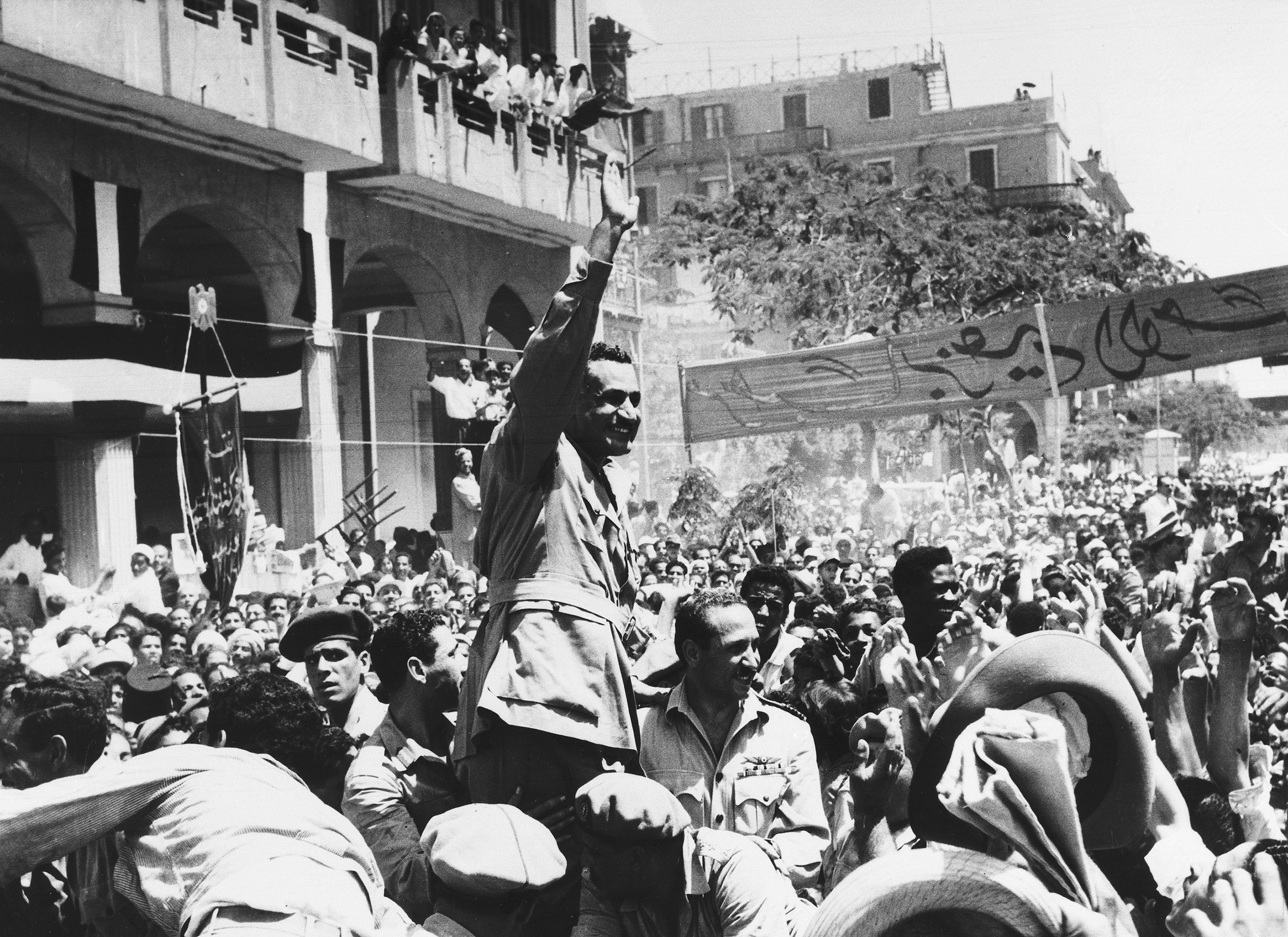Nasser, Gamal Abdel, << NAH sehr, gah MAHL AHB duhl >> (1918-1970), led the revolt that overthrew King Faruk in 1952 and made Egypt a republic. Nasser served as Egypt’s prime minister from 1954 until he was elected president in 1956. Later in 1956, a world crisis occurred after Egypt nationalized (took control of) the Suez Canal, then under British and French control. Nasser wanted to use the money generated by the canal to build the Aswan High Dam. When Syria and Egypt formed the United Arab Republic (U.A.R.) in 1958, Nasser served as its president. Syria withdrew from the U.A.R. in 1961.

Nasser resigned after Egypt lost the Sinai Peninsula in the Arab-Israeli war of 1967. But the Egyptian people and the National Assembly refused to accept his resignation. He became both president and prime minister. Fighting between the Arab countries and Israel continued into the 1970’s. In August 1970, Nasser agreed to a 90-day cease-fire with Israel. He died on Sept. 28, 1970.
Nasser’s book Egypt’s Liberation: The Philosophy of the Revolution (1955) stated his aims to unite all Arabs under Egyptian leadership and to liberate Egypt from colonialism and underdevelopment. He was unable to unite the Arab world, but he did become one of its most influential leaders. Nasser favored a neutral foreign policy and emphasized nationalism and economic reform. He redistributed land to farmers and also advanced education. However, his efforts to develop Egypt’s economy were hampered by overpopulation and poverty.
Nasser was born on Jan. 15, 1918, in Alexandria, Egypt. He graduated from the Royal Military Academy in Cairo in 1938. He fought in the Arab war against Israel in 1948 and 1949.
